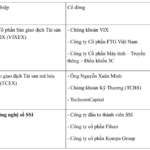This is a crucial step in implementing the 2013 Constitution (amended), the Law on Organization of Local Government No. 72/2025/QH15, and addressing the shortcomings of the current regulations to align with the post-2025 reorganization of administrative-territorial units.

Developing criteria for classifying administrative-territorial units that match the post-merger and reorganization reality – Illustrative image
|
Significant changes after the reorganization
According to the Ministry of Home Affairs, after the merger and reorganization of administrative units, the country has 34 administrative-territorial units at the provincial level (06 cities and 28 provinces) and 3,321 at the communal level (2,621 communes, 687 wards, and 13 special districts). The number and scale of administrative-territorial units at both levels have undergone substantial changes compared to the pre-reorganization period (before June 2025).
At the provincial level, there was a reduction of 29 administrative units. The average natural area of each province or city is 9,743 km², an increase of 85.3% from before. Lam Dong province now has the largest area in the country, with 24,243.13 km², surpassing Nghe An, which was previously the largest.
The average population scale at the provincial level also increased by 85.3%, reaching over 3.3 million people. Ho Chi Minh City has the largest population, with over 14.6 million people, an increase of nearly 4.7 million compared to before the reorganization.
Additionally, the formation of “special districts” is a completely new type of administrative-territorial unit, falling outside the scope of Resolution No. 1211/2016/UBTVQH13.
These changes render the system of criteria, scoring, and thresholds for classification according to Resolution 1211 outdated. Continuing to apply them would lead to a distorted assessment of the position, role, and development level of each locality, directly affecting policy formulation, resource allocation, and organizational structure.
According to the Ministry of Home Affairs, the implementation of the regulations on the classification of administrative-territorial units stipulated in Resolution No. 1211/2025/UBTVQH15 (amended and supplemented by Resolution No. 27/2022/UBTVQH15) has revealed some shortcomings and limitations.
First, the classification criteria are biased, mainly focusing on area, population, and the number of subordinate units, accounting for more than half of the total score. Meanwhile, indicators reflecting governance capacity, digitalization progress, administrative procedure reform, and labor productivity improvement have not received due attention. Consequently, localities with large populations and areas tend to be ranked higher, while smaller but dynamic and reform-oriented localities struggle to improve their classification.
Second, according to Resolution No. 1211/2016/UBTVQH13, the Prime Minister decides on the recognition of the classification of provincial-level units, the Minister of Home Affairs for district-level units, and the Chairman of the Provincial People’s Committee for communal-level units. Additionally, it requires People’s Committees at all levels to submit the classification to the People’s Councils for approval before sending it to the competent authority. This multi-layered process is time-consuming, costly, and does not reflect the spirit of decentralization and devolution.
Third, Resolution No. 1211/2016/UBTVQH13 only stipulates the classification of administrative-territorial units in cases of establishment, merger, division, or boundary adjustment, without establishing a mandatory mechanism for periodic reviews. As a result, many localities remain unchanged in their classification for decades, even with significant fluctuations in population, socio-economic conditions, and governance capacity. This leads to outdated classification results that fail to accurately reflect the reality, reducing their value in policy formulation, resource allocation, and providing no incentive for local governments to reform and innovate.
Emphasizing the urgency, the Ministry of Home Affairs stresses that the new Decree will serve as an essential legal framework for localities to carry out the classification of administrative-territorial units. This will enable them to formulate socio-economic development policies, attract investment, improve living standards, and establish organizational structures, regimes, and policies for local government officials that align with the specific characteristics of each type of administrative-territorial unit.
Hanoi and Ho Chi Minh City are classified as special administrative-territorial units
The Ministry of Home Affairs stated that the Draft Decree inherits the system of administrative-territorial unit types that has been in place and applied stably for an extended period. Except for Hanoi and Ho Chi Minh City, which are classified as special administrative-territorial units as specified in the Law on Organization of Local Government, the remaining units are divided into three types (Type I, Type II, and Type III), determined through a point-based system (below 60 points for Type III, 60 to 75 points for Type II, and above 75 points for Type I).
However, the content of urban classification for each type of administrative-territorial unit has been adjusted to align with the perspectives, principles, and practical context.
Specifically, for centrally-controlled cities: Hanoi and Ho Chi Minh City are classified as special administrative-territorial units, and other centrally-controlled cities are classified as Type I.
According to the Ministry of Home Affairs, cities such as Hue, Hai Phong, Da Nang, and Can Tho have fully met the highest criteria regarding population, area, socio-economic conditions, infrastructure, finance, and governance. By stipulating that these cities automatically belong to Type I, the Decree ensures stability, transparency, and reduced procedures while providing a legal basis for specific policies befitting their roles.
Incorporating dynamic elements
Regarding provinces, the Draft Decree stipulates that provinces will be classified into three types (Type I, Type II, and Type III) based on the total score across five groups of standards: Population scale (maximum of 20 points, minimum of 10 points); Natural area (maximum of 20 points, minimum of 10 points); Number of subordinate administrative units (maximum of 10 points, minimum of 6 points); Socio-economic conditions (comprising 11 sub-criteria with a maximum of 40 points and a minimum of 18 points); and Special factors (maximum of 10 points, minimum of 0 points).
The sub-criteria include: Balanced state budget revenue and expenditure; Proportion of industry, construction, and services; Economic growth rate; Proportion of non-agricultural labor; Labor productivity growth rate; Per capita income; Social insurance participation rate; Multidimensional poverty rate; Rural population’s access to clean water meeting standards; Households with internet access; and Proportion of administrative procedures handled through the online public service portal.
According to the Ministry of Home Affairs, incorporating dynamic indicators ensures that the classification goes beyond population and area considerations to assess governance capacity, digitalization, and administrative reforms—factors that increasingly determine a locality’s development quality.
For communes, the Draft Decree stipulates that communes will be classified into three types (Type I, Type II, and Type III) based on the total score across four groups of standards: Population scale (maximum of 25 points, minimum of 15 points); Natural area (maximum of 25 points, minimum of 15 points); Socio-economic conditions (comprising 7 sub-criteria with a maximum of 40 points and a minimum of 21 points); and Special factors (maximum of 10 points, minimum of 0 points).
For wards, the Draft Decree provides for a similar classification system to communes, with adjustments to the maximum and minimum scores for each criterion and standard to align with the specific characteristics of wards in terms of population scale, natural area, and socio-economic development level.
Regarding special districts, the Draft Decree stipulates that for those classified as urban, the classification criteria for wards will apply, while for the remaining cases, the criteria for communes will be applied. Additionally, it sets the special factor score for special districts at 10 points (maximum).
Furthermore, the Draft Decree introduces bonus points for administrative-territorial units with exceptional characteristics, including provinces or communes with natural areas three times the standard, wards with populations three times the standard, administrative units in particularly difficult areas, or those serving as regional hubs for socio-economic development or inter-communal or inter-ward connections. By allocating a maximum of 10 bonus points, this mechanism ensures that critical and influential administrative-territorial units receive the necessary attention in terms of resource allocation for investment, development, and management.
– 15:43 13/09/2025
Binh Son Refinery Seeks to Boost Chartered Capital Past VND 50,000 Billion
The Binh Son Petrochemical Plant is seeking shareholder approval for a capital increase through the issuance of over 1.9 billion new shares to pay dividends and reward shareholders.
Unlocking the Potential: Removing Barriers to Foreign Investment in the Stock Market
Introducing a transformative initiative: the proposal to abolish the regulation permitting general shareholder meetings to lower foreign ownership ratios below the statutory limit. This move empowers shareholders, fostering a dynamic and inclusive business environment. By removing this regulation, we unlock the potential for greater foreign investment, driving innovation and growth.













































